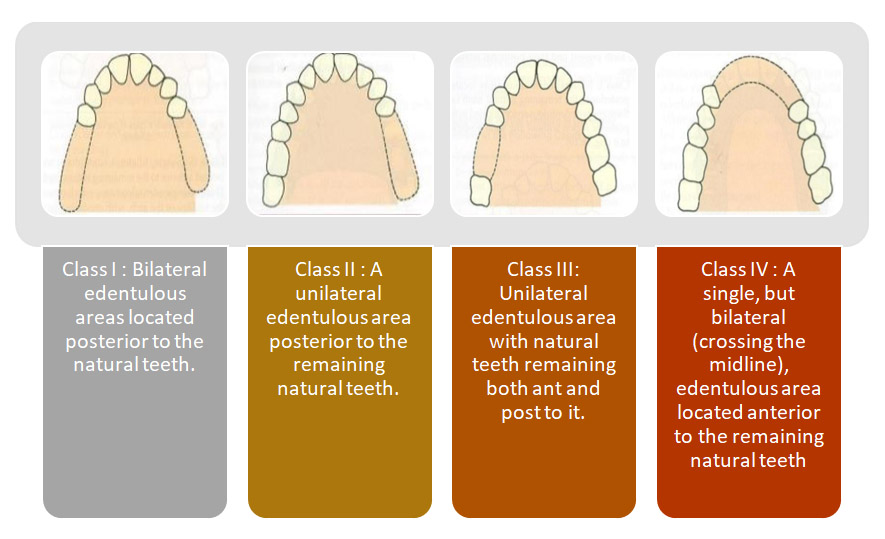- NEED HELP? CALL US NOW
- +919995411505
- [email protected]
Removable Partial Denture (RPD)

REMOVABLE PARTIAL DENTURE RPDs are components of prosthodontics ( branch of Dentistry) pertaining to the restorations and maintenance of oral function, comfort, appearance, and health of the (pt) by replacement the missing teeth and craniofacial tissues with an artificial substitute.
INDICATIONS FOR REMOVABLE PARTIAL DENTURES
- No abutment tooth posterior to edentulous space (Free end edentulous area)
- Long edentulous bounded span, too extensive for fixed restoration
- Periodontally weak teeth not sufficiently sound to support fixed- partial denture.
- With excessive loss of residual bone, the use of labial flange or need to restore lost tissues.
- After recent extraction, usually done only to improve esthetics, or for patient satisfaction.
- Need of bilateral bracing (cross arch stabilization)
- Young age (less than 17 years).
- Enhancing esthetics in anterior region, by the use of translucent artificial teeth instead of dull fixed partial denture pontic.
- Economic considerations, attitude and desire of the patient.
OBJECTIVES OF REMOVABLE PARTIAL DENTURES
- Elimination of oral disease.
- Preservation of the health and relationship of the teeth, and the health of the oral and para-oral structure.
- Restoration of oral function (comfort, esthetic, speech).
CLASSIFICATION OF PARTIALLY EDENTULOUS ARCHES
- The most familiar classification are those proposed by Kennedy, Cummer, and Bailyn, Beckett,
- The recent classification has been proposed for partial edentulism that is based on diagnostic criteria.
KENNEDY CLASSIFICATION
- 4 basic classes.
- Edentulous areas other than those determining the basic classes were designated as modification spaces

- Kennedy referred each additional edentulous areas a modification area,(eg; class I modification, class II modification III)
- In class IV, the most posterior space determines the classification. so cannot have modification spaces.
APPLEGATE’S MODIFICATION
Applegate expand kennedy’s classification by adding class 5 and class 6,- Class 5:edentulous area bounded anteriorly and posteriorly by natural teeth,but in which the anterior abutment is not suitable for support.
- Class 6:an edentulous areain which teeth adjacent to the space are capable of total support of required prosthesis,this denture hardly required any tissue support,
APPLEGATE'S RULES FOR APPLYING THE KENNEDY CLASSIFICATION
- Rule 1 : The classification should follow, not precede extractions.
- Rule 2 : If a 3 rd molar is missing and not to be replaced, it is not considered in the classification.
- Rule 3 : If a3rd molar is present and not to be used as an abutment, it is not considered in the classification.
- Rule 4 : If a 2 nd molar is missing and not to be replaced, it is not considered in the classification.
- Rule 5 : The most posterior area always determines the classification.
- Rule 6 : Edentulous areas other than those determining the classification are referred to as modifications and designated by their No.
- Rule 7 : The extent of the modifications is not considered, only the No. of additional edentulous areas.
- Rule 8 : There are no modification in Class IV.
| ADVANTAGES OF KENNEDY’S CLASSIFICATION | DISADVANTAGES OF KENNEDY'S CLASSIFICATION |
|
|
OTHER CLASSIFICATIONS
- CUMMERS CLASSIFICATION (1921)
- W. BAILYN (1928)
- NEUROHRS CLASSIFICATION
- FRIEDMANS SYSTEM
- OSBORNE and LAMMIE
CUMMERS CLASSIFICATION (1921)
- First classification to be recognised by the dental profession
- He classified partial dentures than edentulous spaces
- Four types
- Diagonal: 2 retainers diagonally opposite another
- Diametric: 2 retainers diametrically opposite one another.
- Unilateral: 2 or more direct retainers on same side.
- 4. Multilateral: 3 direct retainers on either side.
CHARLES. W. BAILYN (1928)
- He emphasized the importance of support for partial dentures.
- “A”- Anterior restorations where there were saddle areas anterior to the bicuspids.
- “P”- Posterior restorations where there were saddle areas posterior to the canines.
CLASSIFICATION
- Class I: Bounded saddle (Tooth supported).
- Class II: Free end saddle (Mucosa supported).
- Class III: Bounded saddle (More than 3 tooth missing). Example: If all posterior teeth from canines till molars are missing with lateral incisors then the classification is AI P III.
NEUROHRS CLASSIFICATION
Class I:Variation I:
- Posterior missing, Anterior all teeth present.
- Posterior missing, some anterior teeth missing.
Variation II
- Anterior missing, All posteriors present.
- Anterior missing, some posteriors missing.
Class II: Division I has variation 1 and 2.
Division II has variation 1 and 2
This classification is tooth tissue bearing.
Class III is edentulous state.
FRIEDMANS SYSTEM
A- Anterior spaceB- Bound posterior space.
C- Cantilever situation or a posterior free end saddle.
OSBORNE and LAMMIE
Class I: Mucosa borne.Class II: Tooth borne
Class III: Combination of mucosa borne and tissue borne.
MCQs
1. Indication of Removable Partial Denture
- Large edentulous space, deep undercut of abutment, not posterior of abutment
- Periodontitis of abutment, esthetic for posterior tooth, not posterior of abutment
- Large edentulous space, not posterior of abutment, periodontitis of abutment
- Deep undercut of abutment, periodontitis of abutment, not posterior of abutment
2. The Kennedy Classification for this cast is
a. Class III mod Ib. Class III mod II
c. Class III
d. Class III mod III
In the picture a mandibular with missing teeth: #36,35,46
Answer: A
Related posts
April 10, 2025
April 9, 2025
April 4, 2025




